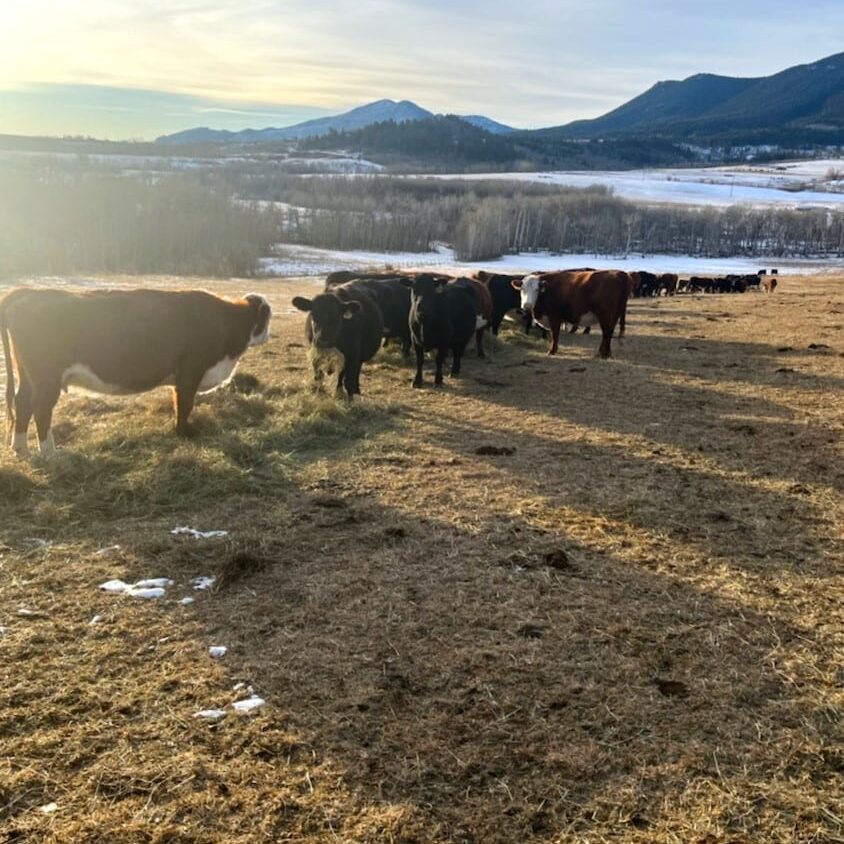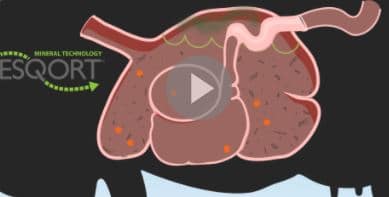Last updated on February 6th, 2024 at 04:20 pm
Premium care for the cattle has an interesting impact on the business of this ranch
Gabrian discovered the secret to healthier cattle
– it’s less stress
Gabrian Ranch Inc.

Red Lodge, Montana
“Help your animals, help yourself.”
That’s what Bev Gabrian says about spending your money in the right places to get the results you want.
The third-generation rancher from Red Lodge, Montana, calls herself the rancher in the family. That’s because, out of her four siblings, she’s the one who wanted to keep the ranch going. “I like to be outside. I like working with animals. And there’s always change; you never get bored.”
And her cattle like working with her. She specializes in selling bred heifers, which she has been doing for nearly 30 years to repeat buyers. “The heifers have great dispositions, they’re healthy, they’re strong and they throw big calves,” she says of the black-baldies.
Treat 'Em Right
She doesn’t get complaints about the heifers, especially about their disposition. That’s not an accident. “It’s just the way we treat them. It’s in their minds that they’re always treated well,” she says. “We feed them twice a day and they get used to being handled.”
At the moment, her 100-head cow herd is Hereford dominated. That’s because of a Polled Hereford bull that took his job very seriously. So she’s going back on those cows with Angus bulls to get the black baldy heifers her buyers like. Counting cows and heifers, she usually runs from 170 to 200 head at a time.
Calving season starts around February 20 and the pairs are turned out on summer grass around the end of May. The summer country is mountainous, a combination of aspen groves and grassland. Then, depending on how dry it is, the pairs come back home the end of August into September where they run on the irrigated hay meadows for the winter.
Weaning starts around November 10, which is when she starts developing the heifers she’ll keep for her own replacements and to sell as bred heifers to other ranchers. The steers get the same treatment.
>> Learn how to reduce calf, stress, stimulate appetite, and more! <<

“We grain them for about four weeks,” she says, feeding oats she grows on the ranch. They’re on the hay meadows and fed grain twice a day in feedbunks. In addition, she feeds hay and moves among the calves to check their health and condition. All that adds up to gentle calves that learn how to trust people.
The steer mates stay on winter pasture until January, where they’re marketed at her local livestock auction. They’ll cross the scale with an average in the 700-pound range and always sell well to repeat buyers.
Reeling 'Em In With Riomax
The orange Riomax tubs have been an integral part of Gabrian’s management for a decade. Back then, her calving season was strung out and she was battling scours, which often infected nearly her entire calf crop.
She saw an advertisement for Riomax that claimed it could help cows start cycling earlier and breed back better. She was at the end of her rope. “I saw the advertisement and thought, “We’ve got to do something different because it’s not working.’ The cows were all spread out and nothing was consistent, a lot of open ones.”
She made the call and has been using Riomax ever since. “What happened was the cows started breeding back together. They were ready to go by the time we turned out the bulls.”
Beyond shortening her calving window, she saw a significant improvement in health. “What also happened was the calves kept coming, getting healthier.” In addition to bloody scours in the young calves, she battled respiratory disease. “I don’t know how many times the whole herd, all the calves got it,” she says of the bloody scours outbreaks. “And it’s not fun to deal with.”

The following calving season after Riomax came on the scene, blood scours were cut in half. Now, it’s essentially not a problem. “We might get a few, but it’s nothing like it was before. The calves don’t get sick. They’re healthier, they’re stronger. And we have less work since we’ve been using Riomax for calving.”
>> Learn more about how Riomax fights scours in calves <<
That’s especially true with her first-calf heifers. “The heifers, they just lay down and calve. It’s very seldom we have to pull a heifer anymore.”
The tubs get placed about a month before calving begins and the cattle have Riomax in front of them until summer turnout. In addition, the calves have Riomax as a supplement after they’re done eating oats, and stay on the tubs until the middle of December. If it’s a drought year, she’ll also use Riomax for fall grazing on dried grass. “It makes a big difference with the cows eating the grass. They have something to help them digest it.”
Everything Is More Manageable
Riomax has earned its place in the Gabrian herd. “There’s less stress, less disease, less problems,” she says. Gabrian admits the tubs are expensive, but then she looks at the time and labor savings, and the stress of dealing with a scours outbreak. “The calves are sick and then you get sick because you get so tired taking care of the sick,” she remembers.
“Since we’ve been using Riomax, we have less work, the cows are healthier, the calves are healthier. They are vibrant and get up and suck right away. Everything is more manageable because there’s less stress on the cows, on us. It just fits in.”




